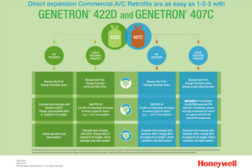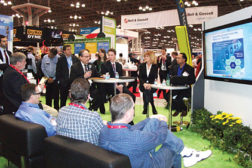Home » HFC refrigerants
Articles Tagged with ''HFC refrigerants''
Want A Quiet Life After R-22? Think Again – It’s Time to Embrace a New Way of Working
Read More
DOC Considers R-134a Sanctions
Actions Aim to 'Level the Playing Field' for Some Imported Refrigerants
May 5, 2014
April 18, 2014: Department of Commerce Looks at Duties on China R-134a Imports
Interim Plan Part of Effort to Control Questionable Refrigerants
Read More
April 1, 2014: Asahi Develops New Low-GWP Refrigerant to Replace HFC-410A
Company Aims to Launch Commercial Production in 2016
April 1, 2014
Keeping R-22 Units Running on HFCs
Retrofit Procedures Can Extend Life of Equipment
March 17, 2014
Feb. 24, 2014: Alliance Supports Covering HFCs under Montreal Protocol
Measure Could Provide Global Commitment to Reduce Greenhouse Gas Emissions from HFCs
February 24, 2014
Feb. 21, 2014: Alliance Petitions EPA for Tighter Restrictions on HFCs
Measure Should Promote Refrigerant Recycling, Mitigate Greenhouse Gas Emissions
February 21, 2014
New Foam-Blowing Agent Lowers Refrigerators’ GWP
Whirlpool Adds Eco-Friendly Insulation to Its Equipment
February 17, 2014
Feb. 12, 2014: Coca-Cola Installs 1 Millionth HFC-Free Cooler Globally
Company Working Toward 2015 Goal to Use Natural Refrigerants for All New Cold-Drink Equipment
February 12, 2014
Copyright ©2025. All Rights Reserved BNP Media.
Design, CMS, Hosting & Web Development :: ePublishing





